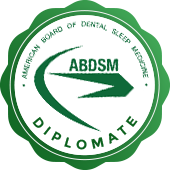A Guide to the Dental Crown Process

Preparing for a dental crown procedure? This restoration works to make unhealthy teeth strong again and improve your overall oral health. There are various reasons one may need to have a dental crown placed, including repairing a cracked or chipped tooth, covering stains and imperfections, or treating a cavity that has caused the tooth to decay.
Dental crown placement is done in a few steps over two appointments that are typically two to four weeks apart, so long as there are no complications or other procedures that need to be performed. Keep reading to find out more about the dental crown placement process.
The steps of getting a dental crown
Outlined here are each of the steps involved in the process of getting a dental crown. Reviewing these can be helpful when preparing for the procedure as it eliminates any surprises later on and sets appropriate expectations.
1. Preparation
To get started with a dental crown, the dentist will do several things to prepare the tooth. First, the patient will need to be numbed using a local anesthetic. The anesthetic is administered with a small injectable shot that goes into the cheek and gums. This completely numbs the oral cavity so the patient does not feel discomfort, which can help reduce any dental anxiety or fear that comes with getting the procedure done. The area is usually numbed within 15-20 minutes of the injection.
Separate from numbing, the dentist will also likely administer a sedative. Adult patients often utilize nitrous oxide, also known as laughing gas. Children can also receive laughing gas, but sometimes other sedatives are utilized too. The purpose of a sedative is to keep the patient calm during the procedure because it can be scary and anxiety-inducing. The effects of laughing gas usually take five minutes or less to kick in and can last up to an hour or so. Sometimes, it may need to be administered again halfway through the procedure. However, this situation is unlikely with dental crowns and is usually reserved for longer procedures or special circumstances.
Next, the dentist will clean the entire tooth and around it to ensure that nothing gets in the way while restoring it. To finish, cotton pads will dry the tooth and surrounding areas. The area must be completely dry because excess saliva can make it difficult to work on the tooth.
2. Restoration
To restore the tooth, the dentist will have to remove any damaged areas. If the patient has a cavity, a dental drill will be used to remove infected portions of the tooth. This can be uncomfortable, which is why the numbing agent helps. If there is just a crack or a chip, another instrument may be used to refine any sharp edges of the tooth. Regardless of the damage, the dentist will restore the tooth as a whole, bringing it back to good health.
3. Fitting
After the tooth is prepared and restored, the dentist will take an impression of the tooth using a small amount of molding. The molding will fit all around the tooth and the adjacent teeth to ensure that the permanent crown will fit properly. After the mold has been taken, it is sent off to a dental lab, which will custom-craft the dental crown out of the desired material. Common materials include gold, metal alloys, porcelain, or a mixture.
4. Temporary placement
The final step in the initial procedure is placing a temporary dental crown. It is created from composite resin, which is a popular material used in dentistry for bonding, fillings, and other restorations. The temporary crown caps the freshly restored natural tooth, which ensures protection and prevention until the final crown is ready.
While waiting for the permanent dental crown, it is recommended to avoid chewing especially hard or sticky foods on the side of the tooth that the temporary crown is on.
5. Final placement
After waiting a few weeks, the patient will return to the general dentistry practice for the final dental crown placement. This will involve the removal of the temporary crown and the proper fitting of the permanent crown. In addition, the dentist will ensure that the dental crown fits securely around the tooth. The crown may need to be shaved down in certain areas to avoid rubbing or irritation.
Learn more about getting a dental crown
Do you have a chipped or damaged tooth? Talk directly with a general dentist to learn more about dental crowns and if you may be a candidate for this restorative treatment. Call our office today to learn more about the procedure or to schedule an appointment.
Request an appointment here: https://artisandentalbellevue.com or call Artisan Dental at (425) 454-2005 for an appointment in our Bellevue office.
Check out what others are saying about our dental services on Google: Dental Crowns and Dental Bridges in Bellevue, WA.
Related Posts
Dental crowns and veneers can both restore the function and appearance of damaged teeth. That damage can take the form of decay, discoloration, chips or cracks, or a crooked appearance. The main difference is that a crown goes over the whole tooth, whereas a veneer only sits on the front. Beyond that, there are pros…
Metal free crowns typically have the best aesthetics. Crowns are among the most used restorations in dentistry and can be made from various materials, like porcelain, ceramic, composite resin, silver, gold, and alloys.Metal free crowns can be used to treat issues like broken, chipped, deformed, or discolored teeth. These restorations are sometimes combined with others,…
Getting a dental crown is a seamless procedure that is done in dental offices every day. There are various reasons to get a dental crown, which will play a role in how the process goes. For example, for those getting a crown to finish the tooth replacement process after an implant has been inserted, the…
How long dental crowns last depends on how well you take care of them. A crown is expected to last about 15 years, but with the proper care, it could last twice as long. If a crown eventually does wear out, you need to have a replacement because the tooth underneath has been permanently altered.…









